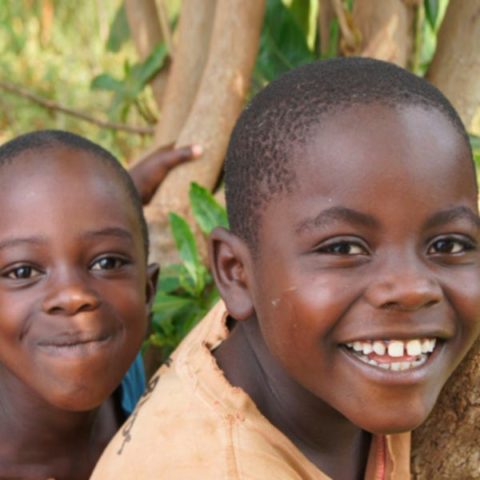
Elimination of leprosy
The overall goal of the WHO Global Leprosy Strategy 2021-2030 is the elimination of leprosy, which the strategy defines as ‘interruption of transmission/absence of disease’. This is a significant change. Earlier, the overall WHO goal was ‘elimination of leprosy as a public health problem’, which meant less than 1 new case per 10,000 population. But new case numbers have stagnated in the past decade, prompting new commitments to ‘zero leprosy’ and, in the WHO strategy, a goal that entails a new definition of elimination.
Has a country achieved elimination?
One of the targets in the Global Leprosy Strategy is that, by 2030, 120 countries will have zero autochthonous (that is, not foreign-born) cases of leprosy (up from a 2019 baseline of 34). Not surprisingly, there is already interest from some previously endemic countries in having ‘leprosy-free status’ recognised. From the experience of countries like Japan and South Korea, there is evidence that – due to the long incubation period of leprosy – a country may achieve interruption of transmission many years before it achieves complete absence of disease. As is the case with other NTDs, whether a country has achieved these milestones needs to be confirmed through a formal, WHO-defined verification process. This normally involves the compilation of a detailed dossier that provides all the evidence that is needed.
WHO Task Force on Criteria for Elimination of Leprosy (TFCEL)
This task force was set up by WHO in March 2020 after an exploratory workshop in Mexico City. It was chaired by Wim van Brakel, Medical Director of ILEP member NLR, who was subsequently also appointed chair of the ILEP Technical Commission. It had two main objectives:
- To define criteria for countries to be ascertained as having made significant progress towards interruption of transmission and elimination of leprosy disease
- To establish criteria and indicators that best define interruption of transmission and elimination (in terms of zero incidence of leprosy disease)
The taskforce met regularly over the following 12 months concluding with a hybrid face-to-face and virtual workshop in March 2021. WHO has now published a report of this workshop.
Milestones
One of the significant outcomes from the TFCEL’s work is a distinction between the various elimination-related milestones. Four phases are outlined for a leprosy programme in its journey towards elimination and beyond. These are set out in the following table:

Criteria
The main factor for determining whether a country has moved from one phase to the next is the provision of data on leprosy transmission. Phase 3, for example, occurs when countries report zero autochthonous cases. Verification that this has been achieved involves a three-year process during which the national programmes will carry out ‘Leprosy Transmission Assessment Surveys’ (LTAS) at the second sub-national level of health administrative units. The LTAS is a thorough review that entails analysis of data, facility assessment (health facilities providing leprosy services) and epidemiological survey among the population at risk for leprosy. All sub-national health administrative units need to qualify to verify ‘zero’.
However, transmission data is not the only the only consideration. The TFCEL has determined a list of 14 criteria that need to be fulfilled by countries to provide assurance that the achievements will be sustained. The criteria include:
- Political commitment with adequate resources for leprosy in integrated context
- Capacity building in the healthcare system for quality services
- Awareness raising among targeted populations and among healthcare workers
- Advocacy for leprosy with government authorities
- Presence of organized partnerships at national and sub-national level
- Diagnosis and leprosy treatment facilities ensuring early detection of leprosy
- Quality of services for managing complications, including counselling and mental health services
- Effective surveillance and improved data management systems
- Contact tracing
- Preventive chemotherapy or post-exposure prophylaxis
- Documentation at sub-national level and development of dossier by national programme
- Leprosy Transmission Assessment Surveys (LTAS)
- Ongoing monitoring, evaluation and verification to ascertain achievement of cut-off levels for the various phases
- Engagement in leprosy research
Dossier for elimination of leprosy
All of this material needs to be incorporated in a Dossier for Elimination of Leprosy prepared by the national programme to substantiate its claim to have reached that milestone. The evidence collected allows an international team, appointed by WHO, to verify that a country a) has an adequate surveillance system; b) has met the criteria for elimination of leprosy; c) has ongoing services for detection, treatment and management of sporadic cases that may occur even after elimination has been achieved; and d) has ongoing services in place for care for and inclusion of persons with leprosy-related disabilities.
Implications for ILEP and ILEP Members
These procedures and requirements will be entirely new to endemic countries as well as to ILEP Members. We can anticipate that Ministries of Health will look to ILEP members for support in several areas, such as:
- Increasing ILEP’s focus on low-endemic countries that may need technical support to put in place what is needed to reach zero disease
- Planning and implementation of the LTAS
- Processes for the collection of data for all the data points required
- Compilation of the Dossier for Elimination of Leprosy
The new tools and procedures will almost certainly need to be piloted with a few countries that are already close to interruption of transmission, and ILEP technical support may be requested.
Finally, the TFCEL has noted that clear targets do not yet exist for the third and fourth pillars of the Global Leprosy Strategy (Manage leprosy and its complications and prevent new disability and Combat stigma and ensure human rights are protected.) WHO is likely to seek ILEP’s expertise to develop targets and indicators that can focus countries’ attention and also make sure that these crucial aspects of leprosy are fully included in the elimination dossiers.
Next steps
Consolidating the work of the TFCEL, the WHO Global Leprosy Programme is preparing a Technical Guidance document, which is likely to be published early next year.